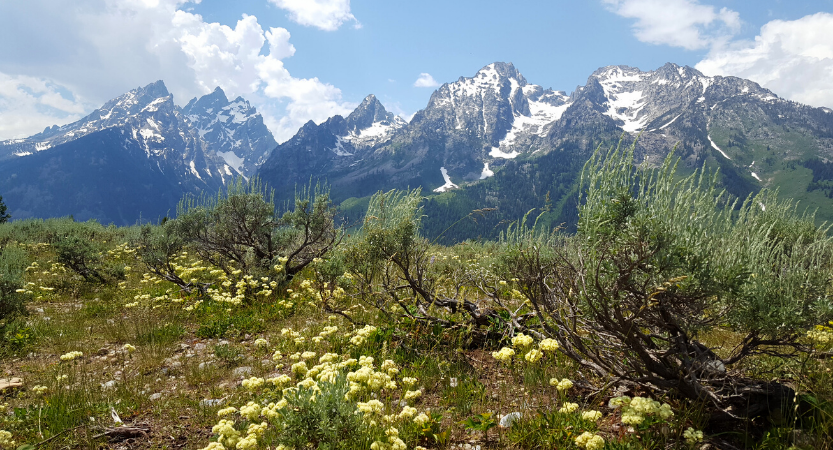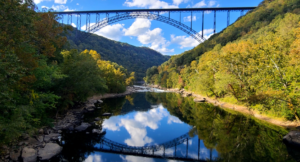getting into our national parks
If you are an avid national parks visitor or frankly if you plan to visit at least 3 national parks within a 12-month period it is essential for you to buy the America The Beautiful National Parks Pass. This pass is currently $80 and covers fees for most National Parks across America. As many parks cost around $35 for a 7 day pass simple math allows that if you visit more than 3 or the same park 3 different times a year that will surpass the value of the annual pass.
If you are military, you can get a free annual pass by showing military ID (form 1173) or a Common Access Card (CAC)
If you are a senior, you can obtain a $80 lifetime seen your past or $20 annual seen your pass by providing documentation of age and resident see/citizenship.
If you have a child in the 4th grade you can get a free annual pass that is valid for the duration of the 4th grade school year through the following summer (September through August).
If you have a permanent disability you can qualify for the access pass, which allows free entry into the park and a 50% discount for amenity fees and services such as camping swimming and boat launching. This past is free when obtained in person or can be obtained online or via the mail for $10 processing fee.
https://www.nps.gov/planyourvisit/passes.htm
Visit for Free Days- there are days that you can visit for free. Just remember these stays will be busy year in the park so plan to go earlier. You can see these free days on the nps.gov website.
planning your visit
Planning ahead is essential. Look into the top things to see in that park and make sure to map out a route for exploration. Many parks are fairly busy and will note when they recommend arrival to ensure parking. Some parks require shuttles which you may have to reserve in advance. You can read the parks basic information and plan your visit section on the national park service website which has a wealth of information you will need. The national parks website also has maps of the park and information on hiking and camping in the area.
getting around the parks
You are going to want a car. Unfortunately, or fortunately, the way these parks are located the best way for exploration for nearly every park is to drive it yourself. Now some parks are fairly busy and have shuttle systems and some parks can only be visited via boat, snowmobile or tour so you will need some planning ahead for those, but the vast majority are most easily accessed via vehicle. Make sure to look into these options in advance and book ahead if planning on doing a tour.
visit the visitor center
The park rangers are a fantastic resource on what you should do if you have not planned in advance. They can also give you information on the current road and hiking conditions and special programs that they may have available for your visit (such as ranger lead hikes or programs). Another benefit of the Visitor Center is you can pick up useful maps and hiking guides. Most visitor centers also have a bookstore to grab a memory/gift if desired. The Visitors Center will have your national parks pass stamp that you can add to your Passport Book for memory of when you visited the park. The Visitor Center will also have information on the Junior Ranger Program if you are traveling with children.
adequately prepare for hiking
Make sure that you have sufficient water, sunscreen, snacks, appropriate clothing, and footwear. When planning your day, I recommend adding an hour to the typical time allotted for hike for a variety of reasons (taking pictures, stopping to eat, additional hiking due to far parking, etc.). If you have additional time, you can always add more to your daily itinerary; however, you otherwise may be rushing or trying to beat the daylight. If you are going to start your hike prior to sunrise or finish the remainder after sunset, it’s important to bring head lamp.
camping preparation
Many camping and other recreation sites can be reserved on www.recreation.gov. Some campgrounds are 1st come 1st are and if you plan to stay at these it is recommended to get there as early as possible and have a backup plan if no available sites at that particular campground.
Bringing your pets
If traveling with pets, make sure to check out that park’s pet regulations. Many parks allow pets on leash in certain areas and campgrounds. See this national park’s website for more information: https://www.nps.gov/subjects/pets/index.htm
enjoying the wildlife
When visiting the National Parks, you will have the opportunity to experience our incredible wildlife. Remember to be respectful of wild animal and keep an appropriate distance. These animals are wild and in their natural habitat. Unfortunately, every year there are people injured from wild animals while visiting the national parks. In general, you should maintain a minimum distance of 25 yards for most wildlife except for predators such as wolves and bears which should be viewed from 100 yards away. It is important to not feed the wildlife and to properly store your food and throw away your trash. It is also important to maintain the posted speed limits when driving on the road as wildlife has been known to run across.
taking pictures
Make sure to have your camera. Our national parks are absolutely stunning and if your anything like me you will want to take a million pictures at each one. Make sure that your cameras are charged, and you have sufficient memory space. It is never a bad idea to have an extra memory card or extra camera battery. For wildlife photos you may want to consider splurging on a telephoto lens. Pictures are a great way to remember all the beauty and memories you make while in the park!
leave no trace
It is our responsibility to preserve these national treasures so to your part to leave no trace. This includes removal of waste properly by packing in and packing it out, washing at least 200 ft away from natural water sources (rivers/lakes), ensuring fires are kept small, in designated areas and put out completely, and leaving natural objects where you find them.
enjoy
Enjoy our country’s essence and beauty. There is nothing as amazing as the vast beauty of our natural wonders and the immense historical memories in the development of our country. Delving into these sites is mind blowing. Appreciate every minute and never stop exploring.




